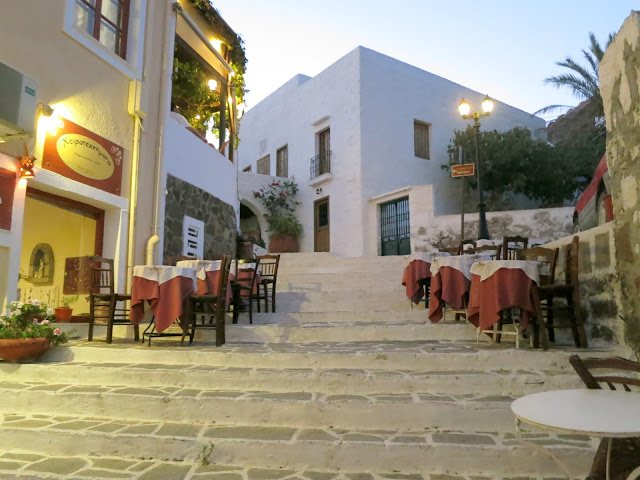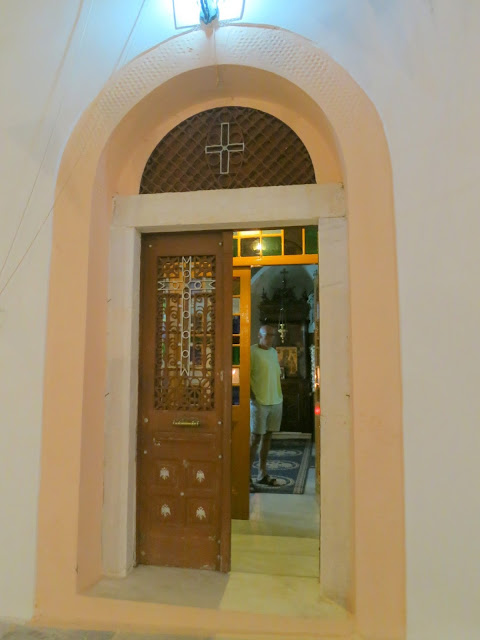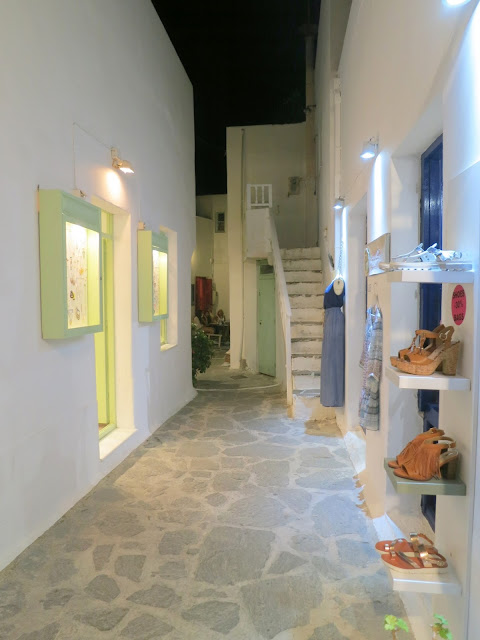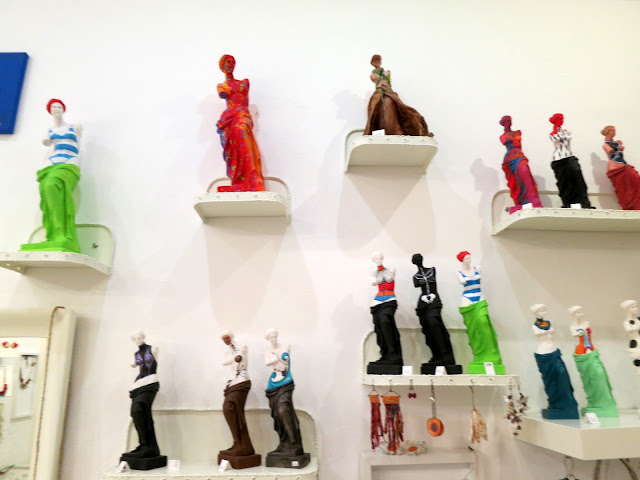There were road works near Plaka and the bus did not go all the way to the catacombs so we had to take a taxi from Adamas, which deposited us here, by this old olive tree.
The views of the gulf of Milos were stunning.
We took the path
and steps down to the entrance of the catacombs.
Only guided groups of 10 are allowed in and the allocated time is 15 minutes.
The catacombs are an early Christian cemetery, consisting of a subterranean complex of halls and corridors which have been carved into the soft volcanic rock. The total length of the vertical (arcosolia) and horizontal ones (loculi) is 185 metres.. The arched ones are either singular or in pairs. There are also floor pit-graves.
The catacombs were used by early Christians first as a burial site and later as a place of worship and a refuge after persecution by the Romans became widespread. They are considered to be the most important early Christian monument of worship in all of Greece. They are among the three most important of the 74 discovered worldwide, together with the catacombs of Rome and the Holy Land. It is possible that the catacombs of Milos are older than the ones of Rome.

The catacombs were known locally as 'the Greek cave'. They suffered extensive damage and looting even before archaeologists discovered them.
There is ample evidence that suggests that most of the first converts to Christianity in Milos were Jews. There was a substantial Jewish community on the island, as well as indications that St Paul was shipwrecked in Milos on his way to Athens from Crete. Consequently, when St Paul encountered his own ethnic group in Milos, according to Professor Adolph von Deissman, '... his teachings fell like a seed on fertile soil'.

It was very dark in there but each individual tomb was well lit.
This is a double grave, the top small one, being one for a baby.
The graves were richly decorated, but only small patches of colour remain - green

and red here.
a double one
There are a few remaining painted decorations and fragments of inscriptions in some of the arcosolia,
as well as small openings for depositing offerings or lamps.
The finds and the burial offerings (jewellery, lamps) allow us to date the use of the cemetery from the middle of the 1st century AD to the 6th century AD.
Difficult to see in the photograph, but this was a much larger family grave.

















































































